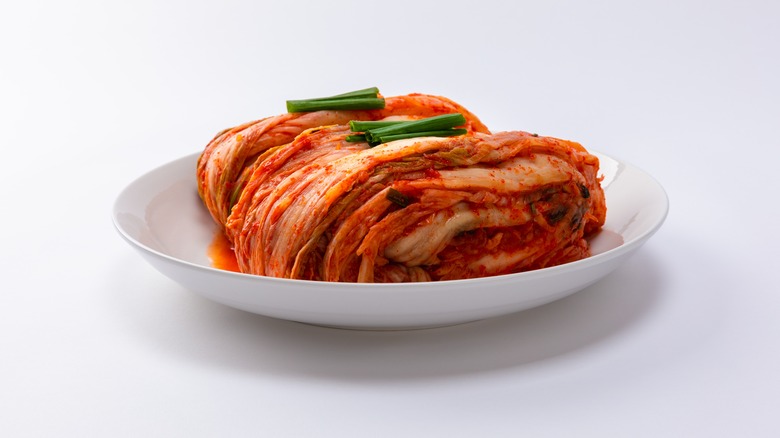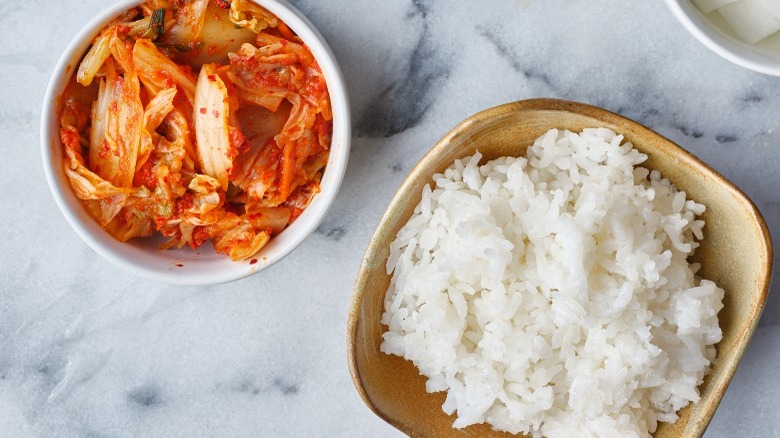The Traditional Way To Eat Kimchi, For The Uninitiated
Kimchi is a side dish, not a salad or a main dish. Over the last few decades, there's been an increasing interest in fermented foods and probiotics. This opened the door for more people around the globe to incorporate kimchi into their meals or snacks, but there is a way to enjoy it the traditional way. First, eating kimchi alone isn't a common practice in Korea. Although the briny and salty flavor can be compared to pickles, kimchi isn't sold as street food in Korea like pickles are at amusement parks. And while we encourage eating food however you please, having kimchi out of the jar is not as common a practice, as, say, eating peanut butter out of the jar is in the U.S. The traditional way to eat it — as the Koreans do — is to pair it with a main dish, be it braised pork belly or a bowl of rice.
Kimchi is usually served with rice
The traditional way to eat kimchi is to have it as a banchan, which is a Korean side dish. Banchan is basically any side dish for steamed rice. In fact, steamed rice is such a crucial part of Korean dining that people usually ask one another if they've eaten rice rather than whether they've had something to eat. The simplest Korean meal you could have is kimchi and white rice, although any addition of meat or potatoes would work as well. Another thing to note is that there are only certain instances when kimchi is acceptably used as a topping. Restaurants that incorporate a kimchi topping or slaw on a bowl of rice are hugely mistaken. Banchan comes in a wholly separate dish from the bowl of rice, so have your kimchi served in a different bowl or take it from the jar as you eat your rice.
There are certain outliers in Korean kimchi-eating practices, and it's in boiled pork wraps or bossam. This rice-less affair is meat and vegetables focused, and kimchi is a crucial part of the wrap. Although the kimchi is added to the wrap, you could still view it as a side for the succulent pork inside. Kimchi is also a typical topping for banquet noodles, which is a simple dish of noodles in broth. Again, while there is no rice in this dish, the kimchi adds acidity and brightness to the depth of the broth.

